 |
 |
 |
| |
Rapid Normalization of Pro-Inflammatory Cytokine Levels During Potent Antiviral Therapy With Sofosbuvir Plus Ribavirin in Patients With Genotype 2 and 3 HCV Infection
|
| |
| |
Reported by Jules Levin
AASLD 2014 Nov 7-11 Boston
David L. Wyles,1 Luisa M. Stamm,2 Matthew S. Paulson,2 Qinghua Song,2 Huan Wang,2 Diana M. Brainard,2 Robert T. Schooley1
1University of California, San Diego, La Jolla, CA; 2Gilead Sciences, Inc., Foster City, CA

Program Abstract
Background: Recognition of HCV infection by hepatocyte pattern recognition receptors (PRR) results in the induction of a multifaceted innate and adaptive immune response. Plasma levels of several proinflammatory cytokines are elevated in the patients with chronic HCV infection and return to uninfected population levels with viral clearance. Dynamic changes in the levels of these molecules during potent antiviral therapy have the potential to provide insight on virus-host interactions and, perhaps, response to antiviral therapy.
Methods: We measured IP-10, IL-18, MIP-1ß and MCP-1 concentrations in patients (n=132) with HCV GT 2 or 3 infection who participated in studies of sofosbuvir (SOF) plus ribavirin (FISSION, FUSION and POSITRON) using the MesoScale Discovery platform. Plasma was obtained prior to therapy (baseline), at weeks 1, 2 and 12 on treatment and 4 weeks post-treatment. Eight groups were studied: GT 2 or GT3 with (CIR) or without cirrhosis (NC) with or without SVR.
Results: In treatment-na´ve patients, higher baseline levels of IP-10, IL-18, MIP-1ß and MCP-1 were observed in those with ALT levels > 1.5 x the upper limit of normal (ULN). Mean IL-18 levels were higher in CIR (281 vs. 215 pg/mL, p <0.01) versus NC at baseline. IP-10, IL-18, MIP-1ß and MCP-1 declined sharply during the first week of therapy and more gradually thereafter through the end of treatment. Baseline levels of IP-10, IL-18, and MCP-1 and changes in these levels on therapy were similar in those who achieved SVR compared to those who did not achieve SVR. Interestingly, despite similar baseline levels, MIP-1ß levels remained significantly higher on therapy in those who achieved SVR (NR vs. SVR week 1: 13.1 vs. 17.2 pg/mL, p<0.01; NR vs. SVR week 2: 13.2 vs. 17.2 pg/mL, p<0.01). Baseline IP-10, IL-18, MIP-1ß and MCP-1 levels, changes in levels on therapy and at the end of therapy were similar in GT2 and GT3 patients. Patients with SVR maintained cytokine reductions following completion of therapy whereas IP-10, IL-18, MIP-1ß and MCP-1 increased in those with viral relapse following completion of therapy.
Conclusions: Plasma levels of the proinflammatory cytokines, IP-10, IL-18, MIP-1ß and MCP-1, exhibit a rapid biphasic decline mirroring HCV RNA decay kinetics immediately after initiating SOF plus ribavirin. Therapy-associated declines in these cytokines may reflect disengagement of intracellular PRR as the HCV components triggering the innate immune response are cleared from infected hepatocytes and may provide an opportunity to better understand the interplay of HCV and its protected niche within the hepatocyte during chronic infection.
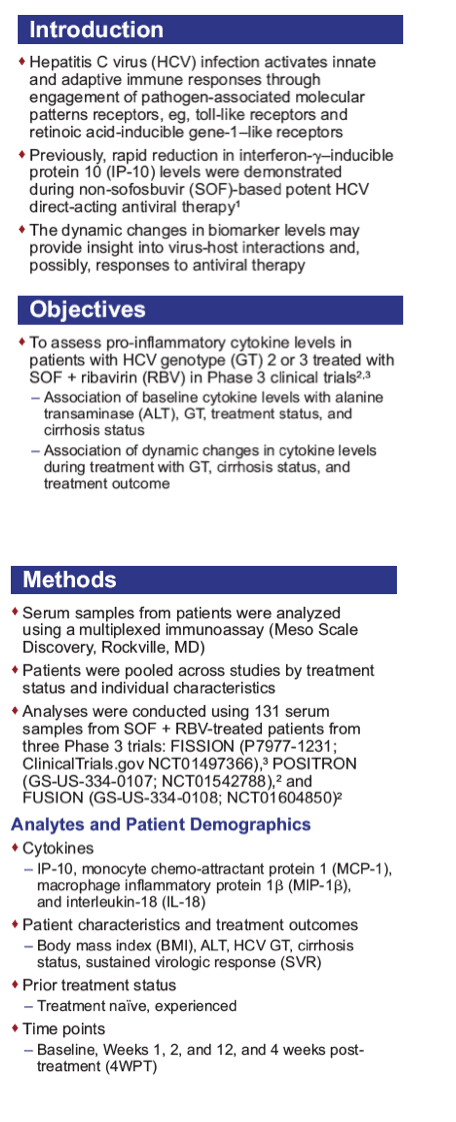
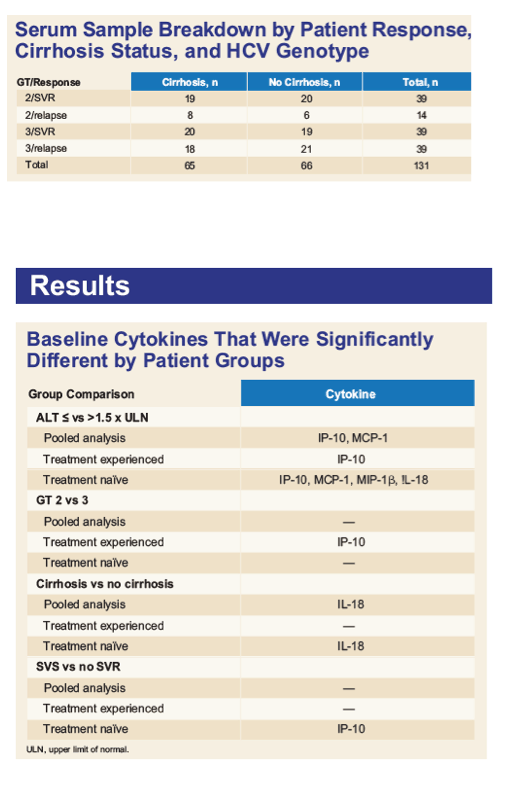
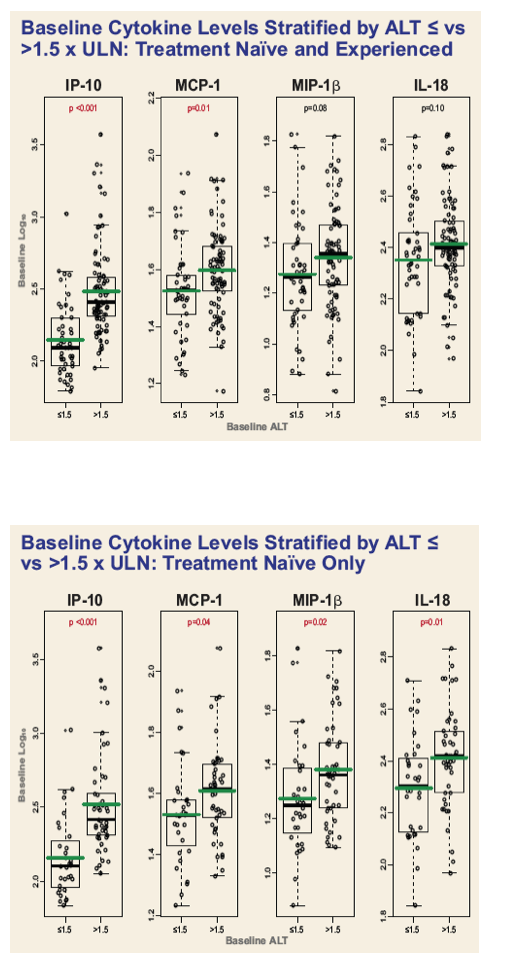
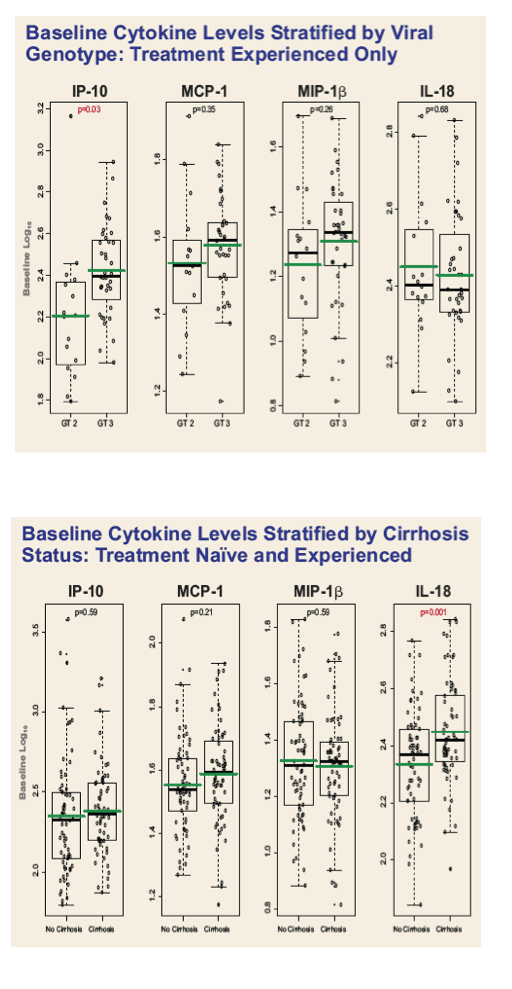
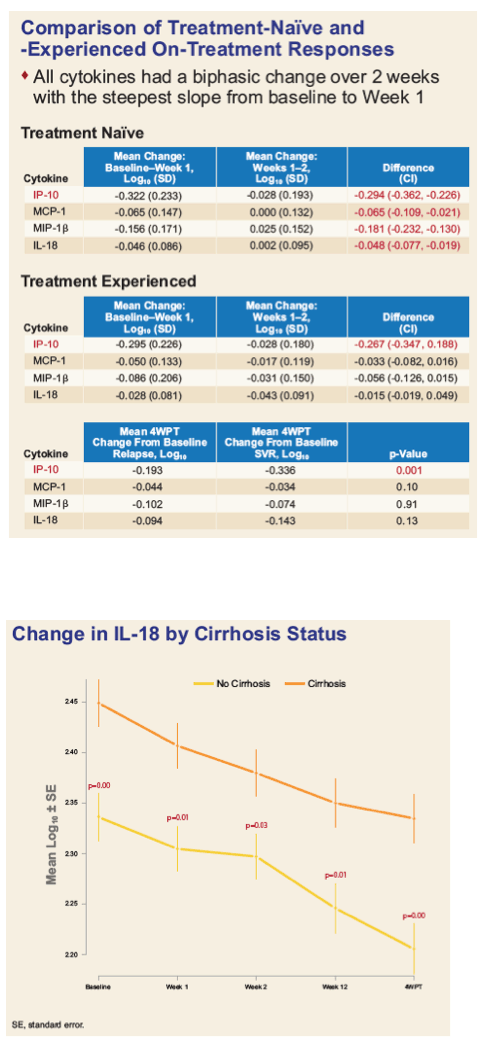
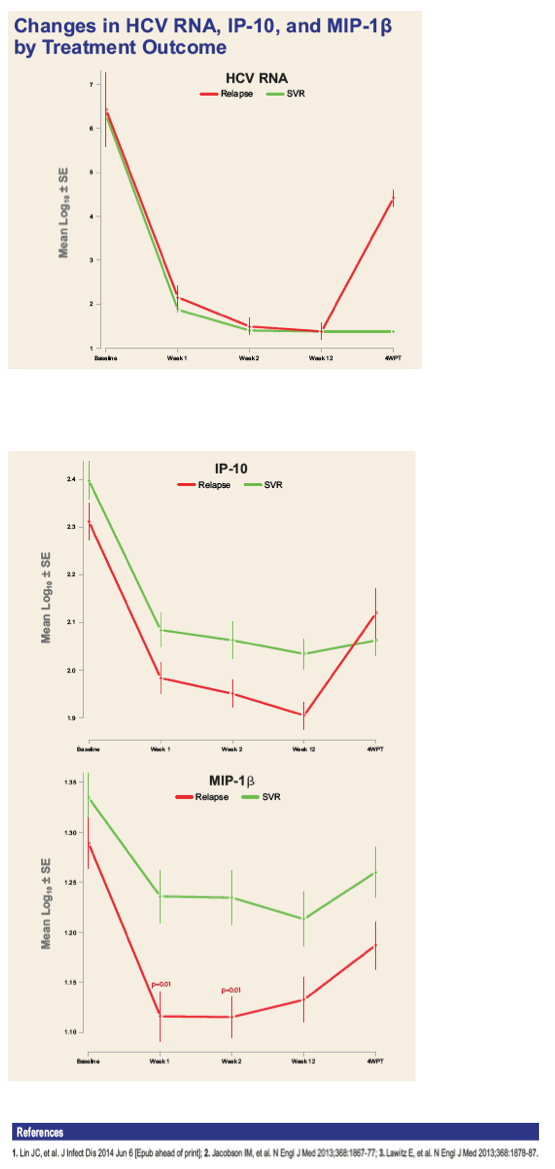
|
| |
|
 |
 |
|
|